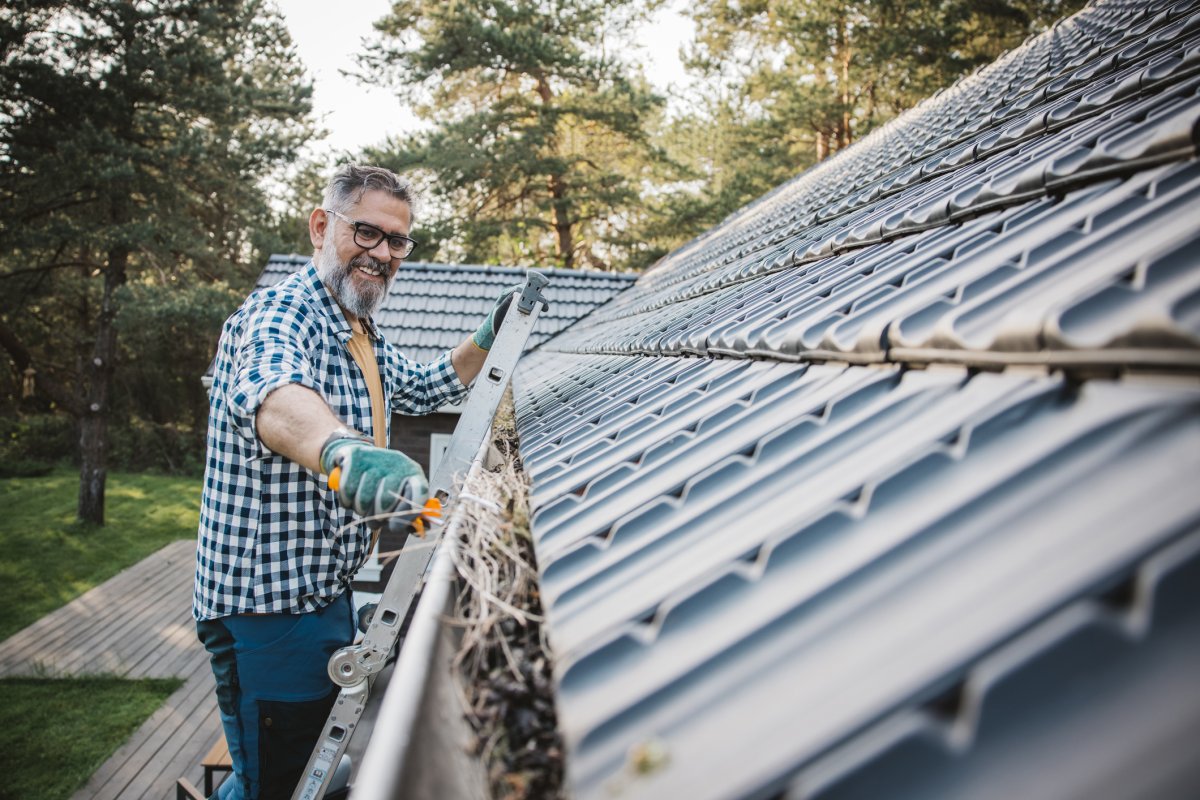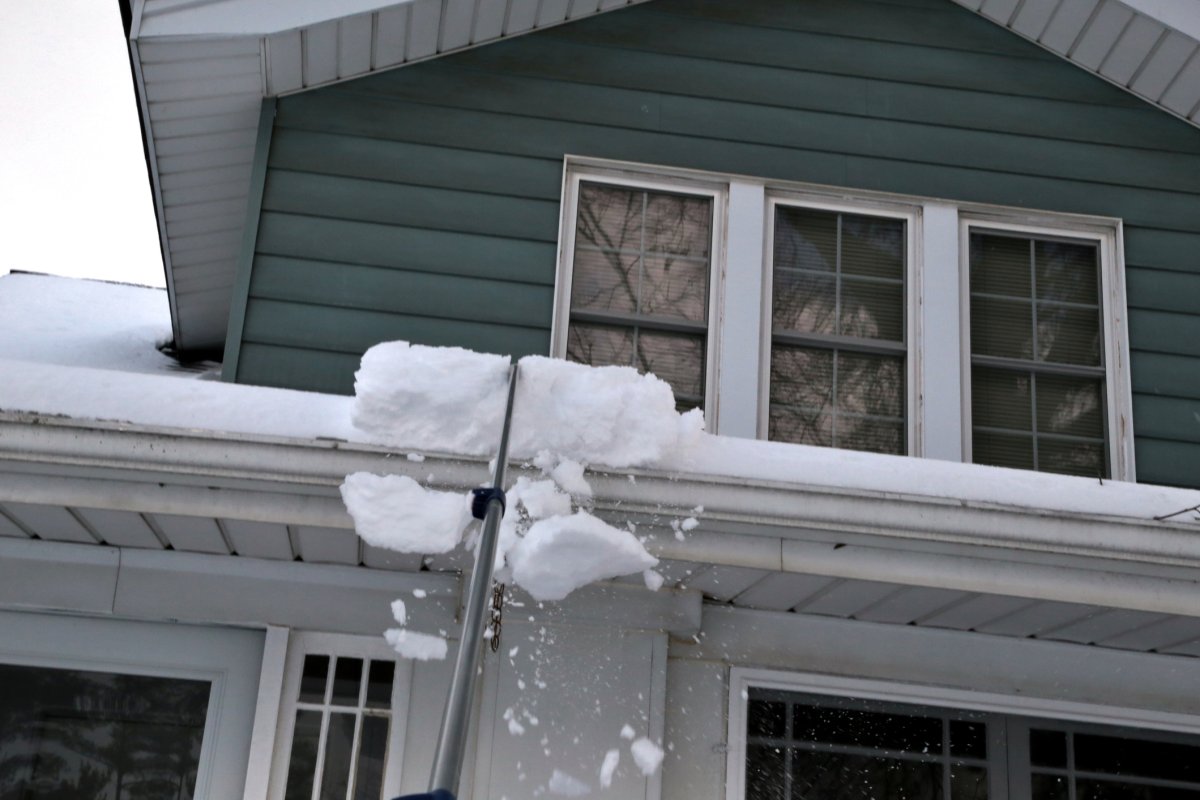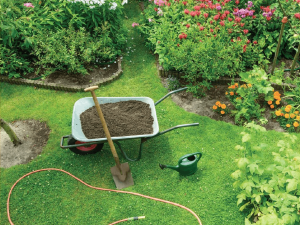We may earn revenue from the products available on this page and participate in affiliate programs. Learn More ›
Icicles hanging off your house and glistening in the sun might produce a gorgeous winter scene, but they can also cause damage and be a safety hazard to your family, pets, and home. Icicles form as snow on your roof melts slowly when temperatures rise above freezing, but then refreezes as ice when long drips of water hit colder air. As multiple icicles form over time, the weight can put stress on gutters and the roof, leading to expensive repairs. Tiny icicles are harmless, but those at least 1 foot long or more should be addressed.
Although it might be fun and satisfying to knock down the icicles yourself, that is not the best idea. These are sharp objects that can pierce anything below when they drop quickly to the ground. Plus, the act of removing icicles can essentially be as dangerous as the icicles themselves.
Learn why you should not remove large icicles yourself, how to remove icicles properly with the help of a professional to avoid any injury or destruction to your home, and when it’s necessary to do so.
Falling icicles can injure people, animals, and structures.
It’s risky business trying to knock down icicles yourself because these spear-like objects can injure you or others in the vicinity as they break from the side of your house. They tend to fall in unpredictable ways, so you might be caught by surprise and get hit on the head, which could easily cause bleeding and in some cases, a head injury like a concussion. You could also end up with bad bruises and even broken bones. While the icicles are hanging on the side of your house, be mindful that they could come crashing down at any time on people, pets, wildlife, and structures or objects like your car.

Removing icicles can damage gutters.
If excess water can’t flow freely through gutters, icicles can form on them and weigh them down. This is often the result of heat inside your house keeping the roof warm, and causing snow to thaw. As the snow melts, water flows into the freezing cold gutter and forms icicles as it spills over the sides of the gutter. This typically happens if the gutters are clogged with debris like leaves, pine needles, and dirt that block the water from running down the rainspout.
If you tear down the icicles, the gutters can break. This is a costly repair you want to avoid. If they break and your home lacks functional gutters during wintertime when snow and ice are melting, this can cause a real problem, including structural damage to your house.
Knocking down icicles can harm the roof.
If heavy icicles weigh your roof down, there might be an ice dam issue. It is common for ice dams to form on roofs in cold climates. An ice dam results from snow that melts and then refreezes at the gutter or soffit due to an abnormally warm roof. Water pools up on the roof and gets trapped between shingles before it freezes, which can weaken the roof, loosen shingles, and even cause leaks in the interior of your home. Those leaks can damage walls, ceilings, and insulation.
Ice dams are most common on asphalt shingle roofs, but can form on other roofing materials, especially if the roof is flat. Icicles are inevitable with ice dams, but removing icicles could cause damage to the roof if not done properly. It is best to take steps to prevent ice dams.

Take steps to prevent icicles from forming in the first place.
While it’s unlikely that you can prevent all icicles from forming on your house, you can take some measures to minimize their occurrence and help prevent winter weather damage to your home.
- Clean gutters regularly to prevent clogs from debris buildup, which ultimately can cause water to back up and freeze.
- Keep up with snow removal, such as by using a snow rake, since less snow on the roof means less melting water that can lead to icicles forming.
- Hire a professional to install heating cables on your roof to keep the snow and ice melted.
- Check that the insulation in your attic is adequate because warm air that heats up that space can end up melting snow in some areas of the roof, creating water that runs off the edge of the roof where it freezes into icicles or ice dams.
- Ensure there is adequate ventilation at the ridge and soffits to help keep the attic cool enough to prevent snow melt.
- Replace or add a drip edge to the roof to help manage water flow and prevent roof and structural damage.

Icicle removal is best left to the pros.
Even if you are tempted to save some money and rip those icicles down, try to contain yourself and make a phone call instead. Safe, proper icicle removal from a gutter or the roof is best done by a licensed contractor or roof cleaner. Besides the risks of getting hurt by the sharp ice itself, it is dangerous to work on ladders and a roof under snowy, icy conditions. Plus, pros know how to remove icicles in such a way that won’t destroy your gutters, roof, and siding.
Pros also have the right tools, gear, and training to remove the icicles and prevent them from forming in the future. This includes gloves, a helmet, safety glasses, a long pole or broom handle, and an extendable roof rake. Before the next winter, take steps to help prevent yearly icicles.


